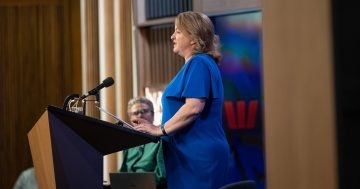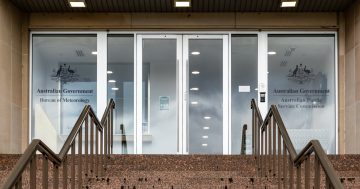
Government Public Service building in Civic. Photo: Michelle Kroll.
Flexibility isn’t something that normally springs to mind when describing the public service – any public service.
Rigidity and conformity are the terms most people would ascribe to public sector bureaucracies.
There has been much talk in recent times, however, about how that’s all changing, and how creativity and adaptability are being embraced across the public sector at federal, state and territory levels.
There is some evidence of that being the case. The pivot to address the coronavirus pandemic is one example that saw conventions discarded in favour of urgent, fresh approaches.
In a recent (and refreshing) address to the Institute of Public Administration Australia, Kathy Leigh, head of the ACT Public Service and Director-General of the ACT Chief Minister, Treasury and Economic Development Directorate, explained that flexibility was the key.
Flexible working arrangements, flexibility between agencies, and flexibility towards the gender pay gap have all resulted in vast improvements in the ACT public service.
Ms Leigh described the service she leads as one campaigning for more natural collaboration between all government levels and better support for staff crossing between jurisdictions on secondments.
She said embracing mobility had changed the culture and achieved a one-service approach in the ACT and that it was a vital attitude for the entire public service.
“I believe that greater mobility between our public services will improve collaboration,” Mr Leigh said.
“It will enhance the operation of our federation and achieve even better outcomes for Australia.”
Flexibility in the ACT public service was also helping to close the gender pay gap.
Promoting flexible working arrangements in the ACT service had attracted more women to the sector and helped keep them there, Ms Leigh said.
The pay gap between men and women in the ACT service was currently at 0.1 per cent, whereas it was at 0.5 per cent for 2021-22.
Getting the right work-life balance policies in place has helped to achieve this.
Virtual meetings – including with ministers – were a big help, as was measuring an employee’s performance by their outcome rather than hours in the office.
“These flexibilities can make it attractive to work full-time or to work more part-time hours and I’m really keen to see all of our staff take advantage of this to share family and other responsibilities,” Ms Leigh said.
“I believe this flexibility will immediately make a real difference to women’s participation in our workforce, and also the gender pay gap.
“Having the full benefit of our whole workforce is crucial to ensuring that we have the best possible workforce.
“These flexibilities also support staff to see their work in terms of achieving particular outcomes, rather than being in a particular location at a particular time.”
She described managing “presenteeism” as an outdated management approach.
She said that a good way to hone management skills is to manage outcomes.




















